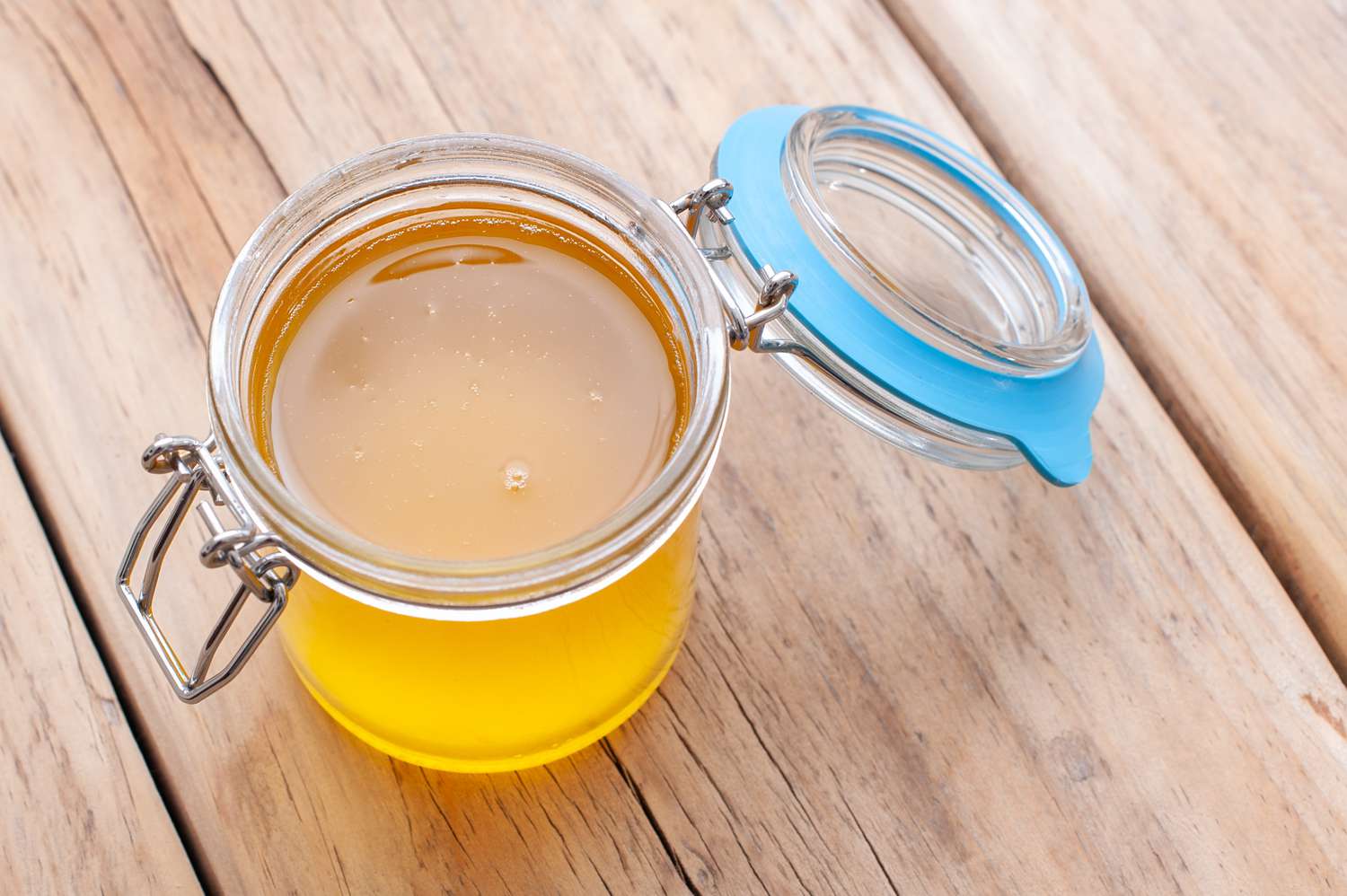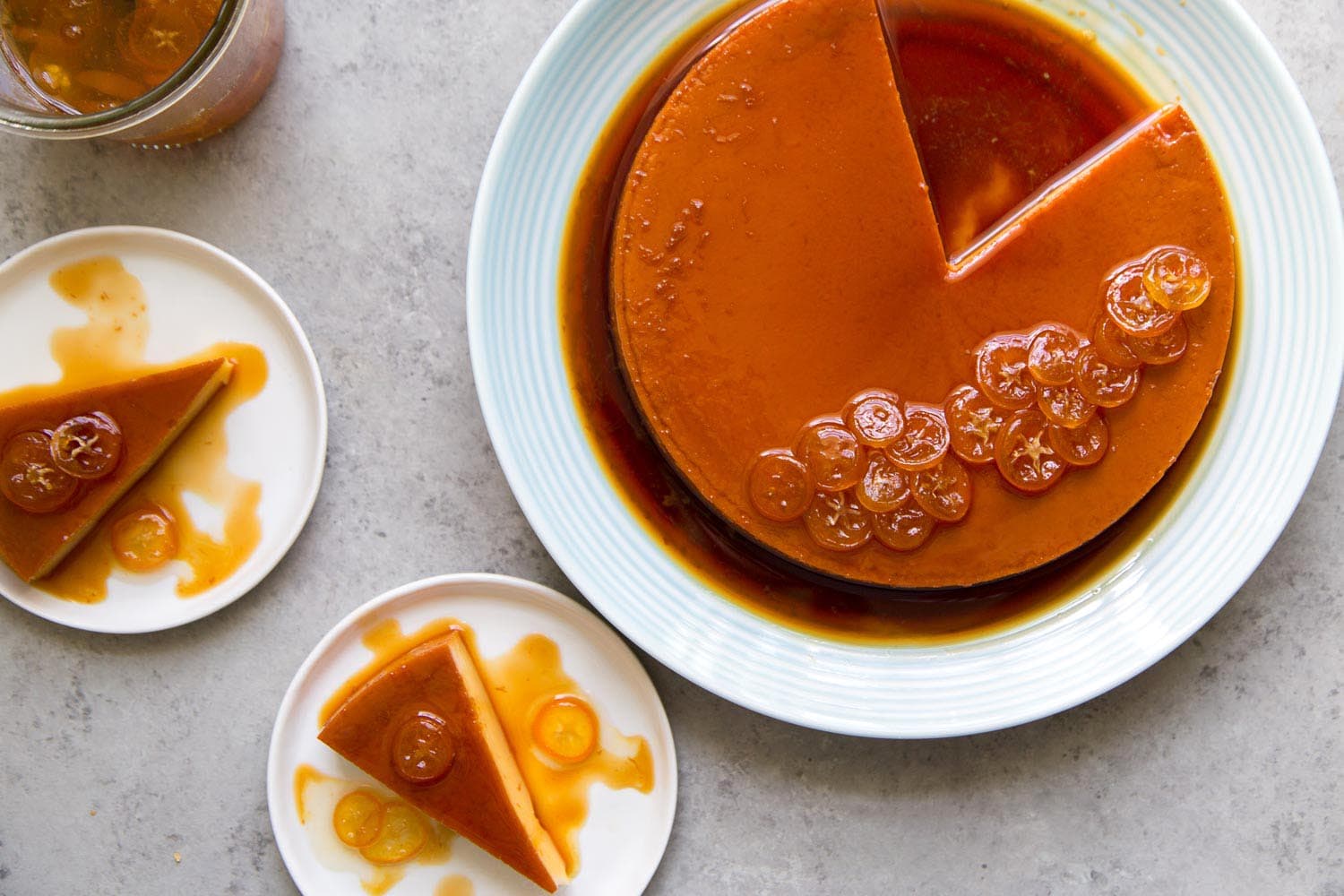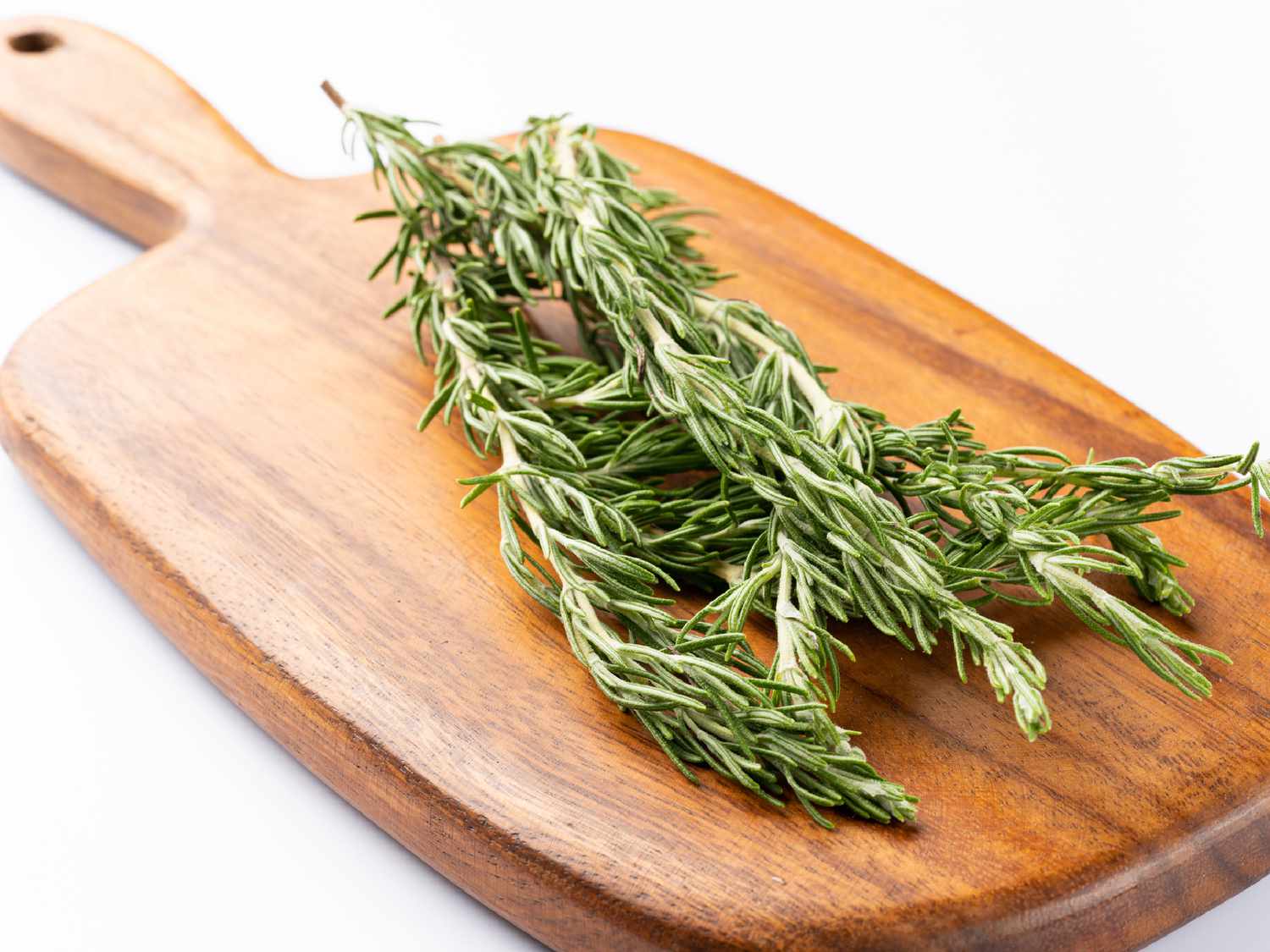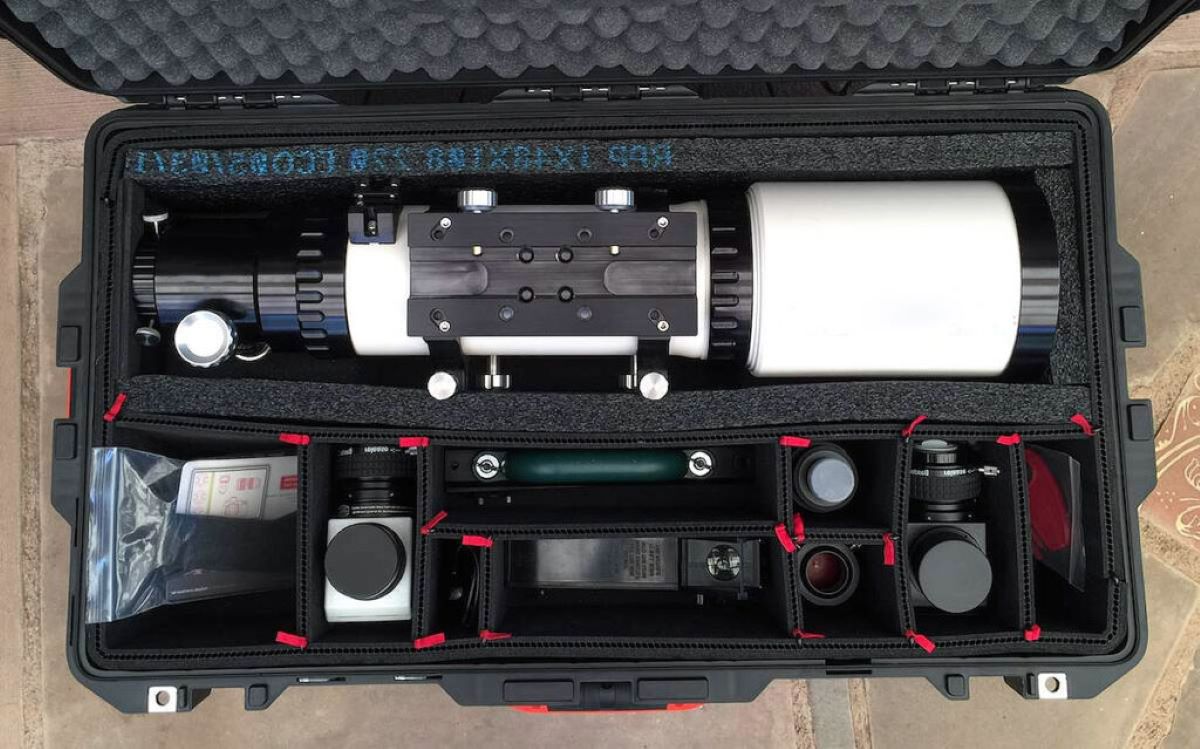

Articles
How To Store Lefse
Modified: December 7, 2023
Learn the best methods for storing lefse in this informative article. Keep your lefse fresh and delicious for longer periods with these helpful tips and tricks.
(Many of the links in this article redirect to a specific reviewed product. Your purchase of these products through affiliate links helps to generate commission for Storables.com, at no extra cost. Learn more)
Introduction
When it comes to traditional Scandinavian cuisine, lefse holds a special place. This soft, thin, potato-based flatbread is a beloved staple of Norwegian and Swedish heritage. Whether you enjoy it plain, spread with butter, or filled with sweet or savory ingredients, there is no denying the delightful taste and texture of freshly made lefse.
However, like any perishable food item, proper storage is essential to maintain its freshness and flavor. Whether you’re making lefse in bulk for a special occasion or have leftover lefse from a family gathering, knowing how to store it correctly will ensure that it stays delicious for longer.
In this article, we will explore the basics of lefse, the importance of proper storage, and provide you with helpful tips on maintaining its freshness. So, if you want to savor every tasty bite of lefse, read on to learn how to store this beloved Scandinavian treat!
Key Takeaways:
- Preserve the Scandinavian tradition by storing lefse in airtight containers in the refrigerator or freezer to maintain its soft texture and delightful flavor for extended enjoyment.
- Enjoy the convenience of frozen lefse by following proper thawing and reheating techniques, ensuring a satisfying taste of Scandinavian tradition whenever the craving strikes.
Read more: How To Store Store-Bought Bread
Basics of Lefse
Lefse is a traditional flatbread that originates from Norway and Sweden. It is made using a simple combination of boiled potatoes, flour, butter, cream, and salt. The dough is rolled thin and cooked on a griddle or a hot, dry skillet. This process creates a soft, pliable flatbread with a slightly sweet and nutty flavor.
Traditionally, lefse is enjoyed during festive occasions, such as holidays and family gatherings. It can be served plain, spread with butter and sugar, or filled with various ingredients like cured meats, cheese, jam, or even savory fillings like smoked salmon or pickled herring. The versatility of lefse makes it a popular choice for breakfast, lunch, or as a snack.
Preparing lefse from scratch can be a time-consuming process, as it involves peeling, boiling, and mashing the potatoes before mixing them with the other ingredients. Making lefse requires attention to detail, as the dough needs to be rolled thin without tearing and cooked just enough to achieve the perfect texture.
While the process of making lefse may seem daunting, it can be a rewarding experience that connects you to your Scandinavian roots or introduces you to a new culinary tradition. Once you have mastered the art of making lefse, it’s important to know how to store it properly to ensure its longevity and retain its delicious flavor.
Importance of Proper Storage
Properly storing lefse is crucial to maintain its freshness and prevent it from drying out or becoming stale. The right storage techniques will help preserve the soft texture and delicate flavor of this beloved flatbread.
One of the main challenges when it comes to storing lefse is its high moisture content. Lefse is made with boiled potatoes and cream, which contribute to its moist and tender nature. However, this moisture can also make it prone to spoilage if not stored correctly.
Exposure to air, humidity, and temperature fluctuations can cause lefse to become soggy, lose its texture, or develop mold. Therefore, keeping it in an airtight container in the refrigerator or freezer is essential to maintain its quality and extend its shelf life.
Additionally, proper storage will help prevent the absorption of odors and flavors from other foods in your refrigerator or freezer, ensuring that the lefse retains its original taste and aroma.
By storing lefse correctly, you can enjoy it for an extended period, allowing you to savor its deliciousness whenever you crave a taste of Scandinavian tradition.
Choosing the Right Storage Container
When it comes to storing lefse, selecting the right container is key to maintaining its freshness and preventing it from drying out or becoming stale. Here are some factors to consider when choosing a storage container:
- Airtightness: It is essential to select a container that is airtight to prevent air from entering and drying out the lefse. This will help preserve its moisture and soft texture.
- Size: Choose a container that is appropriately sized to accommodate the lefse without squishing or folding it. Ideally, the container should be spacious enough to store the lefse in a single layer without overlapping.
- Material: Opt for food-grade containers made of materials like plastic, glass, or stainless steel. These materials are non-reactive and will not affect the taste or quality of the lefse.
- Clear visibility: Consider containers that have transparent lids or are clear in material, allowing you to easily see the contents without opening the container. This will minimize unnecessary exposure and help maintain the lefse’s freshness.
When storing lefse, you have several options for the type of container:
- Plastic containers: These are a popular choice due to their affordability and availability. Look for containers with snap-on lids and a tight seal.
- Glass containers: Glass containers offer the advantage of being microwave-safe, making it convenient to reheat the lefse directly in the container. They are also free from potential chemical leaching.
- Zip-top bags: These can be a convenient option for storing smaller quantities of lefse. Just make sure to remove any air from the bag before sealing it tightly.
- Vacuum-sealed bags: Vacuum-sealed bags are an excellent choice for long-term storage in the freezer, as they remove any excess air and keep the lefse fresh for an extended period.
Remember to clean and sanitize your chosen storage container before storing the lefse to maintain optimal freshness and prevent any potential cross-contamination.
Choosing the right storage container is a critical step in ensuring that your lefse stays delicious and enjoyable for as long as possible.
Preparing Lefse for Storage
Before storing lefse, it is essential to prepare it properly to maintain its quality and freshness. Here’s how you can prepare lefse for storage:
- Cool it down: Allow the freshly cooked lefse to cool completely at room temperature before storing. This will prevent condensation from forming inside the storage container, which can make the lefse soggy.
- Stack and separate: If you have multiple lefse rounds, stack them on top of each other with a layer of parchment paper or wax paper between each round. This will prevent them from sticking together and tearing when you want to retrieve individual pieces later.
- Slice or cut: If you prefer to store lefse in pre-cut or sliced portions, it can be helpful to divide it into individual serving sizes before storing. This way, you can take out only what you need without exposing the entire batch to air and potential moisture.
By following these steps, you can ensure that your lefse is prepared for storage in the most convenient and effective way.
Store lefse in an airtight container or resealable plastic bag in the refrigerator for up to 2 weeks. If you want to store it for longer, wrap it tightly in plastic wrap and freeze for up to 3 months.
Read more: How To Store Basil From Grocery Store
Storing Lefse in the Refrigerator
The refrigerator is a suitable option for storing lefse if you plan to consume it within a few days. Follow these steps to properly store lefse in the refrigerator:
- Cool it down: Ensure the lefse has cooled down completely at room temperature before transferring it to the refrigerator. This will prevent condensation from forming inside the container.
- Wrap in plastic wrap: To maintain the lefse’s moisture and prevent it from drying out, wrap each individual round or stack of rounds tightly in plastic wrap. This will create a barrier against air and help retain the lefse’s freshness.
- Place in airtight container: After wrapping the lefse in plastic wrap, place it in an airtight container. This additional layer of protection will ensure minimal exposure to air and help maintain its soft texture and flavor.
- Label and date: It’s a good practice to label the container with the date of storage. This will help you keep track of freshness and determine when to use the lefse.
- Store in the refrigerator: Place the container in the refrigerator, preferably on a shelf away from strong-smelling foods. This will prevent the lefse from absorbing any unwanted odors.
When stored properly in the refrigerator, lefse can stay fresh for up to 3-5 days. After this period, its quality may begin to deteriorate, and it may become less enjoyable to eat.
Remember to handle the container with care when retrieving lefse from the refrigerator to avoid crushing or damaging the delicate flatbread. Enjoy the chilled lefse as is, or gently warm it before serving.
Storing lefse in the refrigerator allows for short-term preservation while ensuring that it remains flavorful and ready to enjoy whenever you desire a taste of Scandinavian tradition.
Storing Lefse in the Freezer
If you have a surplus of lefse or want to store it for a longer period, the freezer is the perfect option. Freezing lefse can help maintain its quality and extend its shelf life. Follow these steps to properly store lefse in the freezer:
- Cool it down: Allow the lefse to cool completely at room temperature before freezing. This step is crucial to prevent condensation and ice crystals from forming inside the packaging, which can affect the lefse’s texture.
- Wrap in plastic wrap: Wrap each individual round or stack of rounds tightly in plastic wrap. This will protect the lefse and prevent it from drying out in the freezer.
- Double-wrap for extra protection: For added protection against freezer burn and to maintain the lefse’s freshness, consider double-wrapping the plastic-wrapped lefse in aluminum foil or placing it in a freezer-safe resealable bag.
- Label and date: It’s crucial to label the packaging with the date of storage. This will help you keep track of the lefse’s freshness and ensure you use the oldest ones first.
- Place in freezer-safe container: If you are storing multiple individually wrapped lefse rounds, place them in a freezer-safe container. This will help keep them organized and protect them from being crushed by other freezer items.
- Store in the freezer: Place the container in the freezer, ideally in a spot where the lefse will not get crushed or damaged by other items. Make sure the temperature is set at 0°F (-18°C) or below to maintain the lefse’s quality.
When properly stored in the freezer, lefse can stay fresh for up to three months. Beyond that, the quality may start to deteriorate, and the lefse may become dry or develop freezer burn.
To thaw and enjoy the frozen lefse, simply remove the desired amount from the freezer and let it thaw at room temperature for about 30 minutes to an hour. Alternatively, you can briefly warm it in a microwave or a dry skillet over low heat. Avoid using high heat, as it may cause the lefse to become tough or brittle.
Storing lefse in the freezer allows you to have a taste of tradition conveniently available, whether it’s for a special occasion or a simple craving for this Scandinavian treat.
Thawing and Reheating Lefse
When it comes to enjoying frozen lefse, proper thawing and reheating techniques are crucial to preserve its texture and flavor. Follow these steps to thaw and reheat lefse:
- Thaw at room temperature: Take the desired amount of frozen lefse out of the freezer and let it thaw at room temperature. Place it on a plate or a clean surface and allow it to soften naturally for about 30 minutes to an hour. This will help the lefse regain its pliability and make it easier to handle.
- Microwave method: If you’re short on time, you can use a microwave to thaw and reheat lefse. Place the frozen lefse on a microwave-safe plate and heat it in short bursts of 10 to 15 seconds at a time, checking and flipping it over between each interval. Be cautious not to overheat, as it can cause the lefse to become tough and less enjoyable.
- Skillet method: For a crispy texture, you can reheat thawed lefse in a dry skillet over low heat. Warm the lefse for about 10 to 15 seconds on each side, until it becomes pliable and slightly golden. Avoid high heat, as it can cause the lefse to become brittle.
- Serve and enjoy: Once the lefse is thawed and reheated, it is ready to be enjoyed. Fill it with your favorite ingredients, such as butter and sugar, or get creative with savory fillings like smoked salmon, cheese, or pickled herring. Roll it up and savor the flavorful taste of Scandinavian tradition.
Remember to only thaw and reheat the amount of lefse you plan to consume immediately. Refreezing thawed lefse can affect its texture and quality.
By following these thawing and reheating techniques, you can enjoy the deliciousness of lefse straight from the freezer, making it a convenient and satisfying treat whenever the craving strikes.
Tips for Maintaining Freshness
To ensure that your lefse stays fresh and delicious for as long as possible, consider the following tips:
- Proper storage: Store lefse in airtight containers to minimize exposure to air and moisture, whether in the refrigerator or freezer. This will help maintain its soft texture and prevent it from drying out.
- Separate layers: If storing multiple lefse rounds, place parchment paper or wax paper between each round to prevent them from sticking together. This makes it easier to retrieve individual pieces without tearing them.
- Regularly check for freshness: Periodically check the stored lefse for any signs of spoilage, such as mold or off smells. If you detect any, discard the affected pieces and ensure that the remaining lefse is still fresh.
- Label and date: Properly label the storage containers with the date of storage. This will help you keep track of the lefse’s freshness and consume the oldest ones first.
- Avoid stacking or crushing: Be careful not to stack heavy objects on top of stored lefse or crush it unintentionally. Handle it with care to preserve its delicate texture.
- Reheat with caution: When reheating lefse, use gentle heat to prevent it from becoming tough or brittle. Whether using a microwave or skillet, warm it in short intervals to achieve the desired temperature without overcooking.
- Enjoy within recommended timeframes: Consume refrigerated lefse within 3-5 days and frozen lefse within three months for the best taste and texture.
- Keep away from strong odors: Avoid storing lefse near foods with strong aromas, as it can absorb those flavors and affect its taste. Keep it in a separate compartment or away from pungent items in the refrigerator and freezer.
By following these tips, you can maximize the freshness and enjoyment of your lefse, ensuring that every bite is as delicious as the day it was made.
Read more: How To Store Jordans
Conclusion
Lefse, the beloved Scandinavian flatbread, is a delicious treat that captures the essence of Norwegian and Swedish cuisine. Whether enjoyed plain, spread with butter and sugar, or filled with savory ingredients, lefse brings joy and a taste of tradition to any occasion.
Proper storage is key to maintaining the freshness and flavor of lefse, allowing you to indulge in its delightful taste even days or months after it is made. Whether you choose to store it in the refrigerator or freezer, following the right techniques will ensure that your lefse stays soft, moist, and full of flavor.
From choosing the right storage container to properly preparing and storing lefse, these steps will help preserve its quality. By wrapping it tightly, labeling and dating the containers, and storing it in the appropriate temperature, you can savor the taste of Scandinavian tradition whenever the craving strikes.
Thawing and reheating lefse requires a gentle touch to maintain its texture and prevent it from becoming tough or brittle. Whether you choose to thaw it at room temperature or use the microwave or skillet methods, the goal is to bring the lefse back to its pliable and flavorful state.
By following the tips for maintaining freshness, such as checking for spoilage, handling lefse with care, and consuming it within the recommended timeframes, you can ensure that each bite is as delicious as the first.
So, whether you’re preserving leftover lefse from a family gathering or making it in advance for a special occasion, proper storage techniques will allow you to enjoy this Scandinavian delight for longer periods without compromising its taste and quality.
Embrace the tradition, preserve the flavor, and savor the delightful taste of lefse today and beyond!
Frequently Asked Questions about How To Store Lefse
Was this page helpful?
At Storables.com, we guarantee accurate and reliable information. Our content, validated by Expert Board Contributors, is crafted following stringent Editorial Policies. We're committed to providing you with well-researched, expert-backed insights for all your informational needs.














0 thoughts on “How To Store Lefse”